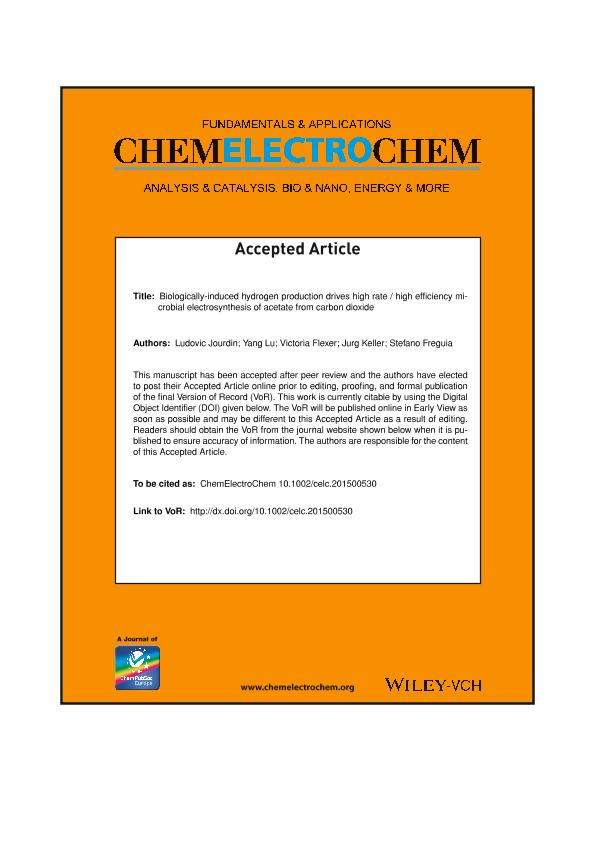Artículo
Biologically Induced Hydrogen Production Drives High Rate/High Efficiency Microbial Electrosynthesis of Acetate from Carbon Dioxide
Fecha de publicación:
04/2016
Editorial:
Wiley-VCH
Revista:
ChemElectroChem
ISSN:
2196-0216
Idioma:
Inglés
Tipo de recurso:
Artículo publicado
Clasificación temática:
Resumen
Electron‐transfer pathways occurring in biocathodes are still unknown. We demonstrate here that high rates of acetate production by microbial electrosynthesis are mainly driven by an electron flux from the electrode to carbon dioxide, occurring via biologically induced hydrogen, with (99±1) % electron recovery into acetate. Nevertheless, acetate production is shown to occur exclusively within the biofilm. The acetate producers, putatively Acetoanaerobium, showed the remarkable ability to consume a high H2 flux before it could escape from the biofilm. At zero wastage of H2 gas, it allows superior production rates and lesser technical bottlenecks over technologies that rely on mass transfer of H2 to microorganisms suspended in aqueous solution. This study suggests that bacterial modification of the electrode surface (possibly via synthesis of Cu nanoparticles) is directly involved in the significant enhancement of the hydrogen production.
Archivos asociados
Licencia
Identificadores
Colecciones
Articulos(SEDE CENTRAL)
Articulos de SEDE CENTRAL
Articulos de SEDE CENTRAL
Citación
Jourdin, Ludovic; Lu, Yang; Flexer, Victoria; Keller, Jurg; Freguia, Stefano; Biologically Induced Hydrogen Production Drives High Rate/High Efficiency Microbial Electrosynthesis of Acetate from Carbon Dioxide; Wiley-VCH; ChemElectroChem; 3; 4; 4-2016; 581-591
Compartir
Altmétricas




